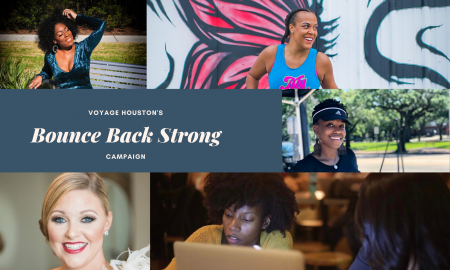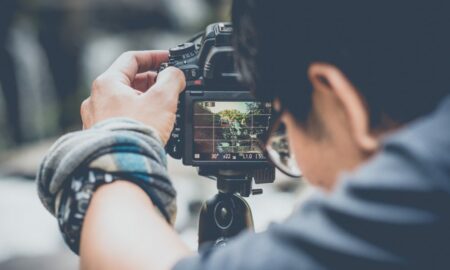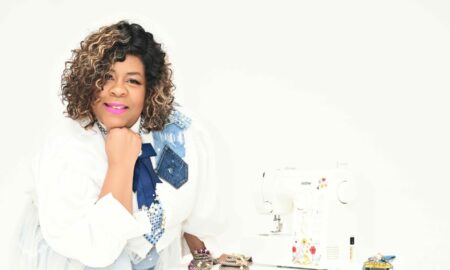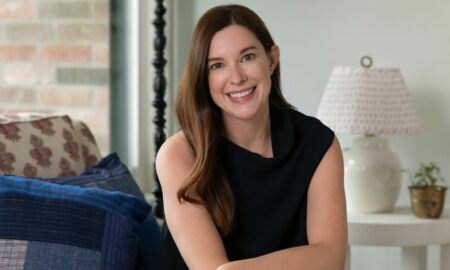

Today we’d like to introduce you to Anthony Almendarez.
Every artist has a unique story. Can you briefly walk us through yours.
My story starts in Los Angeles with a push from my brother who forced me to join the high school marching band. I remember him saying, “we need trumpet players, so you’re joining band,” and not long after having a Jupiter trumpet in my hand, with sheet music in front of me. It was completely foreign, but those days in marching band became my only escape from the harsh reality. During those years my mother lost her job and we became homeless, a fact that I never shared with anyone. Those years in school were also made difficult and unpleasant because many of the teachers and counselors were somewhat prejudice and downright racist. I felt so uncomfortable at times that I chose to hide in the practice rooms of the band room instead of attending classes. I received so many absences over the years that it was a miracle I crossed the stage.
Fortunately I had a teacher (Dr. Richard Kravchak) that went above and beyond in encouraging me to further my education. He even assisted in the application process, whenever I became confused. To my shock I was accepted into the only school I applied to and four years later, I earned a degree in Music Education. I participated in every ensemble that fit my schedule, including choir. In desperate need of a job, I attempted to join the Marines as a musician. I auditioned and was accepted but then was denied enlistment due to my bad vision. Out of options, I was forced to move to Houston, Texas for work joining the ranks of blue collar workers in the assembly lines. We built motor and generator rotors for hybrid vehicles in Toshiba. Inspired by the workers and their stories, I began writing music attempting to capture and illustrate some of those narratives.
After two years, I went back to school studying formal composition. I spent two years under the guidance of my composition teacher Mark Zanter. He encouraged me to explore composition outside the traditional form using concepts of sonic art, electroacoustic music, computer music, in different aesthetics of the audio-visual medium. Today, years after having graduated and moved back to Houston, I still find myself exploring those same concepts. In addition to writing music I perform improvisational music and collaborate frequently with other artists both in Houston and across the U.S.
Can you give our readers some background on your art?
I’m an interdisciplinary artist working in video, performance, installation, and music composition. My work has evolved over the years, but the underlying theme lies in examining the conditions and characteristics of the human condition. From a young age, my taste in music has always gravitated towards art that talked about work, politics, and hardships in life. In fact, part of the reason I completed my Composition degree in West Virginia was the opportunity to be immersed in the home of traditional folk and bluegrass music, which is notorious for its narrative songs. What intrigued me most was not the lyrics but the manner in which the music illustrated and elicited one’s emotions, being representative of their culture. I found myself searching for music that was representative of my own and discovered very little outside of the realm of popular music. My work, therefore, seeks to expand on the limited repertoire all while pushing what constitutes a narrative structure within the auditory medium. I want to challenge the hierarchy between the audio and visual senses and confront their respective stereotypes in relation to identity. Ultimately, I want to introduce new modes of storytelling that are inclusive of the histories and collective memories of those thriving along the margins of society.
Given everything that is going on in the world today, do you think the role of artists has changed? How do local national or international events and issues affect your art?
I believe the role of an artist has always been to engage the world by reflecting their interiority in relation to society. Essentially letting us view the world from a different viewpoint, illustrating problems if compelled when they arise and to give new perspective. Given that my work seeks to inject new representation of the Latinx community; local, national or international events do have an influence. The negative portrayal of the Latinx community is what drives my passion to inject new representation that shines light into our humanity. We are not alien and we should certainly not be treated as an Other.
What’s the best way for someone to check out your work and provide support?
If you happen to be in Houston, you can see my work at exhibitions or when they are screened. One can also visit my website and media platforms to view some of my works and collaborations. Most of my recent work has been in performance and installations, which makes them site-specific and not fully available. If you’d like to support me, you could commission a new work, attend performance/exhibits/installations, engage in a conversation or debate, collaborate, and/or follow me on social media.
Contact Info:
- Website: https://cargocollective.com/anthonyalmendarez
- Email: almendarez.ab@gmail.com
- Instagram: https://www.instagram.com/almendarez.ab/
- Other: https://soundcloud.com/anthony-almendarez-1





Image Credit:
Elizabeth Canterbury
Getting in touch: VoyageHouston is built on recommendations from the community; it’s how we uncover hidden gems, so if you know someone who deserves recognition please let us know here.

















